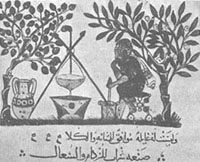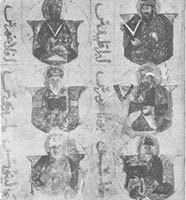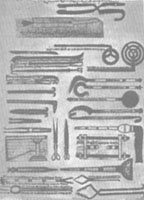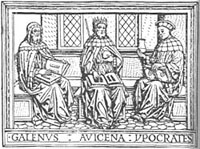|
At Maragha, in the thirteenth century, distinguished astronomers from many countries gathered to work. Christians and Jews were among them, and the Chinese who came took back to China Arab trigonometry for their own scientific experiments.27 Medicine In the fields of medicine, the Arabs continued to improve on the healing arts of ancient Mesopotamia and Egypt. Al-Razi, in the ninth century, a medical encyclopedist, was an authority on contagion. Of his many volumes of medical surveys perhaps the most famous is the Kitab al-Mansuri, which was used in Europe until the sixteenth century. Al-Razi was the first to diagnose small pox and measles, the first to associate these diseases and others with human contamination and contagion, the first to introduce such remedies as mercurial ointment, and the first to use animal gut for sutures.28 The great medical scholar known in the west as Avicenna was the Arab, Abu-Sina who was both a philospher and a scientist. He was the greatest writer of medicine in the Middle Ages and his Canon was required reading throughout Europe until the seventeenth century.29 Avicenna did pioneer work in mental health, and was a forerunner of modern western psychotherapists. It was his belief that some illnesses were psychosomatic and he would sometimes lead a patient back to a recollection of an incident buried in the subconscious which caused the present ailment. In the fourteenth century, when the Great Plague ravaged the world from India and Russia across Europe, Ibn-Khatib and Ibn-Khatima of Granada recognized that it was spread by contagion.30 Ibn-Khatib's most important
|
 Physician preparing medicine. From a manuscript of the Materia Medica, 1222-1223 A.D. |  A portrait of six Greek physicians found in the Arabic translation of Galen's Treatise on Electuaries (1200 A.D.) |

